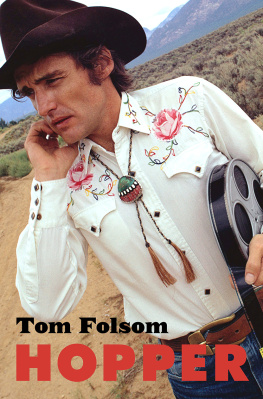Dennis Bergkamp - Stillness and Speed
Here you can read online Dennis Bergkamp - Stillness and Speed full text of the book (entire story) in english for free. Download pdf and epub, get meaning, cover and reviews about this ebook. year: 2013, publisher: Simon & Schuster Ltd, genre: Science. Description of the work, (preface) as well as reviews are available. Best literature library LitArk.com created for fans of good reading and offers a wide selection of genres:
Romance novel
Science fiction
Adventure
Detective
Science
History
Home and family
Prose
Art
Politics
Computer
Non-fiction
Religion
Business
Children
Humor
Choose a favorite category and find really read worthwhile books. Enjoy immersion in the world of imagination, feel the emotions of the characters or learn something new for yourself, make an fascinating discovery.
- Book:Stillness and Speed
- Author:
- Publisher:Simon & Schuster Ltd
- Genre:
- Year:2013
- Rating:5 / 5
- Favourites:Add to favourites
- Your mark:
- 100
- 1
- 2
- 3
- 4
- 5
Stillness and Speed: summary, description and annotation
We offer to read an annotation, description, summary or preface (depends on what the author of the book "Stillness and Speed" wrote himself). If you haven't found the necessary information about the book — write in the comments, we will try to find it.
Stillness and Speed — read online for free the complete book (whole text) full work
Below is the text of the book, divided by pages. System saving the place of the last page read, allows you to conveniently read the book "Stillness and Speed" online for free, without having to search again every time where you left off. Put a bookmark, and you can go to the page where you finished reading at any time.
Font size:
Interval:
Bookmark:


First published in Great Britain by Simon & Schuster UK Ltd, 2013
A CBS COMPANY
Copyright 2013 by Dennis Bergkamp
This book is copyright under The Berne Convention.
No reproduction without permission.
All rights reserved.
The right of Dennis Bergkamp to be identified as the author of this work has been asserted by him in accordance with sections 77 and 78 of the Copyright, Designs and Patents Act, 1988.
Simon & Schuster UK Ltd
1st Floor
222 Grays Inn Road
London WC1X 8HB
www.simonandschuster.co.uk
Simon & Schuster Australia, Sydney
Simon & Schuster India, New Delhi
Photographs courtesy of Jaap Visser
A CIP catalogue record for this book is available from the British Library
Hardback ISBN 978-1-47112-951-3
Trade Paperback ISBN 978-1-47112-952-0
ebook ISBN 978-1-47112-954-4
Typeset in UK by M Rules
Printed and bound by CPI Group (UK) Ltd, Croydon, CR0 4YY
I NEVER SAW THE 1980s comedy Twins but the poster was fantastic. It showed tiny, squidgy-looking Danny DeVito leaning into muscle-bound giant Arnold Schwarzenegger under the tagline Only Their Mother Can Tell Them Apart.
The object you hold in your hands is basically Danny DeVito. Its giant twin remarkably similar yet entirely different is the Dutch edition of this book, written by my esteemed colleague Jaap Visser. He has created a coffee-table colossus covering every aspect of Dennis Bergkamps life and career chronologically. That version is illustrated with many hundreds of colour pictures and will surely one day govern California.
Dennis, naturally, is the biological parent of both editions.
The form, we feel, fits the man. A footballer like no other ought to have a book (or books) no less distinctive. In the film, the brothers share genetic material. We did something similar. Broadly speaking, Jaaps research and interviews with Dennis covered his Dutch years while I dealt with his time in Italy and England. Then we pooled everything.
The Dutch edition is in the classic tradition of football biography. The English one is more experimental, its structure influenced, among other things, by Puskas on Puskas, Rogan Taylor and Klara Jamrichs wonderful book of interviews with and about Ferenc Puskas, and by Francois Truffauts book of interviews with Alfred Hitchcock. I am not remotely comparable to Truffaut and Dennis is certainly much nicer than the Master of Suspense. But, like him, he is a unique and influential genius in his chosen art form. Much of the book concerns Denniss technique and creative process.
On the field, Dennis usually played as a deft and original shadow striker, operating between the lines, using his skills and understanding of space to help colleagues and create moments of beauty that won football matches. In print, he now does much the same, playing off interviews with colleagues, coaches and fellow footballing greats like Johan Cruyff, Arsene Wenger, Thierry Henry and Tony Adams. The result, we hope, is both unique and revealing.
When he retired from Arsenal in 2006, Dennis had no plans to write a book. But the more he moved into coaching with his boyhood club Ajax, the more he realised he had something of value to say. That turned out to be an understatement...
David Winner
London, 2013
Y OU GET USED TO the noise, says Dennis, smiling. You hardly notice it.
We are standing a few yards from Denniss childhood home beside the A10 motorway that circles Amsterdam. Up until the 1950s the road was a muddy field where cows grazed on the extreme western edge of the city. By the time the Bergkamp family moved here in 1970 construction had begun. As a toddler, Dennis, watching from his high chair by the window, was enchanted by the sand trucks, bulldozers and cranes at work. These days, mature trees and glass barriers reduce the sound of traffic but in the seventies nothing stood between the flat and the roaring torrent of cars and lorries. Yet the recollection delights him. Dennis even remembers how the road ended up being useful. When it was finished it ran all the way around the city, so it took me six minutes to get to training. Through town it would have taken me forty-five minutes. As we stroll through his old neighbourhood his memories are all happy ones.
Dennis was the youngest of four sons in a hard-working and devoutly Catholic family. Wim, his dad, was a modest, twinkly-eyed craftsman and perfectionist. He worked as an electrician, played football with the Wilskracht club (the name means Willpower) and loved making and repairing things: furniture, toys, puzzles, anything. Denniss mum, Tonny, an accomplished amateur gymnast in her youth, ran the family home here on James Rosskade (the Kade), adored all her boys and was renowned for her warmth, strength and neighbourliness.
Dennis crosses the wide pavement towards the entrance to number 22. Look up there on the first floor: that was my bedroom. And this is where we played football, here on the pavement. His old building appears rundown but Dennis doesnt mind. He gazes contentedly up at the wall of brick and messy balconies. He is beaming. Its fair to say I had a perfect childhood here.
Football was a huge part of it. The Bergkamp boys Wim Jr, Ronald, Marcel and Dennis played not only here in the street, but in the corridor of the flat and on local patches of grass. When the security guy with the large dog guarding it were away, they even used the real grass pitch on the far side of the motorway, reached through a tunnel and over a wooden plank across a ditch. Televised football was rare by todays standards. On Saturday evenings the family would hurry to Mass at nearby St Josephs Church but only after watching German football on television. The FA Cup final, one of the few English games shown live, was a special treat. Legend has it that Dennis was named after his fathers favourite player, Denis Law. The legend is true. For the different spelling, though, we have to thank Wim Jr, ten years old at the time, and Ronald, aged seven, who thought Dennis sounded less girly than Denis. Their little brother grew up to like Glenn Hoddle better. Im not sure why, but the thing that always interested me most was controlling the ball, especially when it was in the air. I wasnt interested in dribbling or doing tricks or scoring goals. Control. That was my thing. We saw some English football on TV and the player who really stood out for me was Glenn Hoddle, because he was always in balance. I loved the way he plucked the ball out of the air and controlled it. Instant control. His touch was perfect.
At school Denniss teacher, Mr De Boer, let the kids play five-a-side in the gym. We finished school at twelve, ran home as fast as we could for a quick sandwich and then went straight back to school. At half-past twelve wed be back in the gym playing paalt-jesvoetbal (literally, little-stick football). Everyone had their own stick and you had to defend that against the ball. My stick was Maradona. I made him in my arts and crafts class. I filed the wood away so he had a neck, a head and a torso and I painted him in blue and white stripes with a number 10 on the back.
We played football all the time, especially here. The Kade was wider in those days, and there werent so many cars. It was real street football: four against five or five against five or four against four. You had to have a certain level of skill and balance because the concrete was hard and if you fell, youd hurt yourself. One goal was that tree over there. It was a brilliant feeling to score there. The tree was a small target so you had to be so precise. And this door would be the other goal. You had to be clever and use what was around. You could play a one-two off the wall, or a car, but you werent allowed to hit the door of the car so you aimed for the wheel. Be precise, invent... that was the idea. You were always looking for solutions.
Next pageFont size:
Interval:
Bookmark:
Similar books «Stillness and Speed»
Look at similar books to Stillness and Speed. We have selected literature similar in name and meaning in the hope of providing readers with more options to find new, interesting, not yet read works.
Discussion, reviews of the book Stillness and Speed and just readers' own opinions. Leave your comments, write what you think about the work, its meaning or the main characters. Specify what exactly you liked and what you didn't like, and why you think so.












